Instrumentation
The Department of Chemistry and Physics provides students with hands-on experience using instruments that are ubiquitous in research and industrial labs across the nation. Due to our class sizes, students get quality time on each of these instruments. Students also have the opportunity to use these instruments in independent research projects. The instruments cover the gambit from powerful electrochemistry instruments, to absorptions and emission spectroscopies, to a variety of separations systems.
Electrochemistry
BASi Epsilon for Electrochemistry
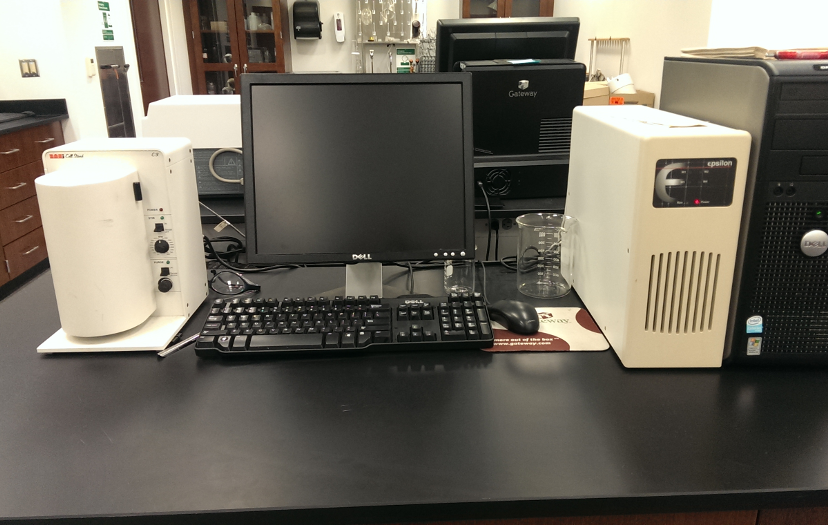
The BASi instrumentation is common in most electrochemistry labs and has the capabilities to do a wide range of experiments. We are able to do potentiometric and amperometric procedures. Analytical Instrumentation students presently do cyclic voltammetric and chronocoulometric techniques; however, the potential is left to the imagination of the students as to what projects they may choose.
Spectroscopy
Jasco FT/IR-6100
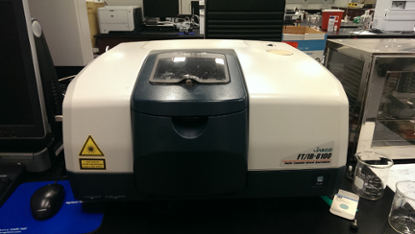
Fourier Transform Infrared Spectroscopy (FTIR) is used extensively for molecular analysis. Often used for the identification of organic species, the FTIR is able to analyze wet and dry samples, as well as thin films and gas samples. In addition to identification of compounds, FTIR is also an important tool for determining properties of molecules.
Cary 300 Bio UV-Vis Spectrometer
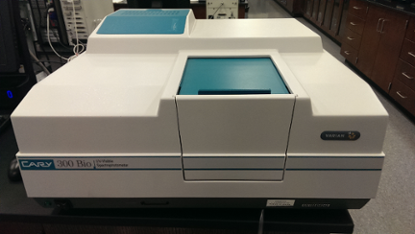
The Cary double beam UV-Vis is used extensively in chemical analysis, both qualitative and quantitative techniques. The instrument is routinely used for analysis of organic molecules that have UV absorption properties and identification of metallic ion species in solution without doing separations. As with the FTIR, this instrument may also be used to determine properties of molecules. The ease of use and flexibility of the instrument’s software lends itself to a wide range of experimental techniques and research projects.
Agilent MP-AES 4200
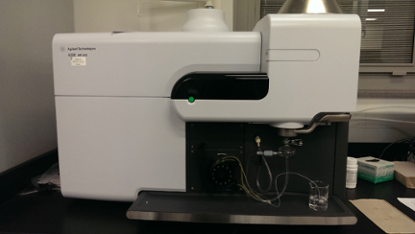
While atomic absorption spectroscopies are common in teaching labs, the technology has advanced to more sensitive and versatile atomic emission spectroscopies. A Microwave Plasma Atomic Emission Spectrometer is a more recent addition to the line of instrumentation that can do trace metal analysis in a variety of matrices. With this research grade instrument, students can do accurate trace metal analysis of environmental samples that are common in workplace and environmental applications.
Bruker 400 MHz NMR Spectrometer
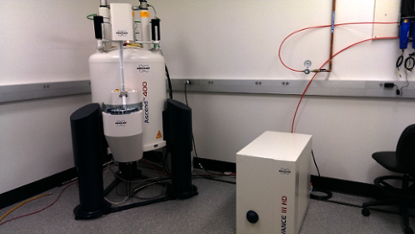
The department's NMR is a Bruker 400 MHz spectrometer equipped with a 24-sample auto sampler for automated, high-throughput NMR requisition. Our instrument is capable of observing all magnetic nuclei between 109Ag and 1H, while current applications involve the more common 1H, 2H, 13C, 15N, 17O, 19F and 31P nuclides. Our NMR is capable of performing standard single/multi-nuclei 1D and 2D experiments, and also has variable temperature capabilities for obtaining spectra between −150°C to 160°C.
Separations
Agilent 1200 Infinity
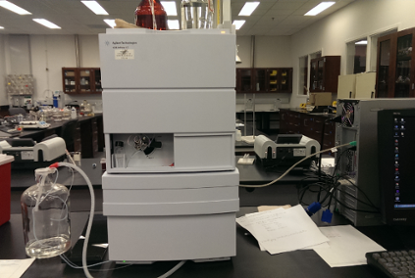
High performance liquid chromatography (HPLC) provides the ability to do separations of complex mixtures based on polarity of the components. HPLC instruments are used extensively in analyses of pharmaceuticals, and plant compounds such as THC and CBDs. Students use this instrument in our instrumentation lab and in their independent research projects.
Agilent 7820A GC with FID
Agilent 7820A GC with Agilent 5975 Mass Spectrometer
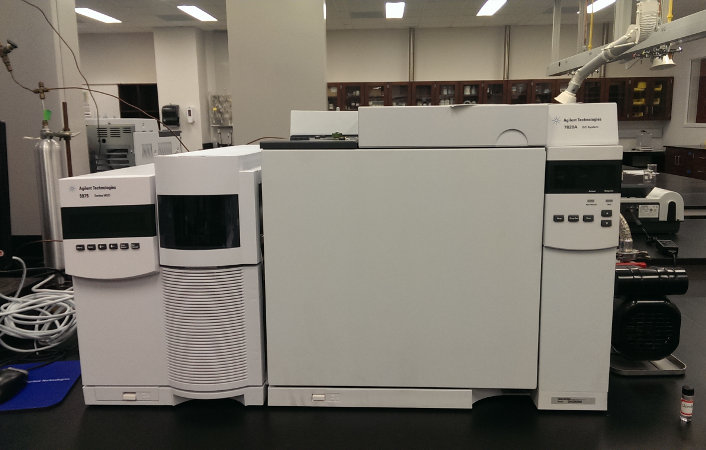
The UNA instrumental lab is equipped with two gas chromatography instruments each with a different detector. The detectors determine the applications that may be performed on these two platforms. The flame ionization detector (FID) is commonly used in techniques that do not necessarily need to identify each component of a mixture, but is routinely used in separations and quantization of the component in a mixture of volatile compounds. The platform with the mass spectrometer can identify unknown components in a mixture and can be used in characterization in synthesis experiments.